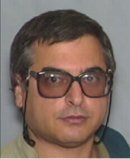|
Plenary Lecture
Gradient Theory Across the Scale Spectrum: Examples from
Astroscales and Above to Nanoscales and Below

Professor Elias C. Aifantis
Laboratory of Mechanics and Materials
Polytechnic School
Aristotle University of Thessaloniki, Thessaloniki
GR-54124, GREECE
and
Center for Mechanics of Material Instabilities and
Manufacturing Processes
College of Engineering
Michigan Tech University
Houghton, MI 49931, USA
E-Mail:
mom@mom.gen.auth.gr
Abstract:
Gradient theory has been succesful in interpreting a
variety of physical processes ranging from diffusion and
chemical reactions to deformation and fracture
phenomena. The theories of spinodal decomposition,
dislocation patterning, gradient elasticity and gradient
plasticity are special examples. After reviewing these
advances, the extensions of gradient theory to model
other phenomena across the scale spectrum are discussed.
These include examples ranging from nanoscales and below
to astroscales and beyond.
Brief Biography of the Speaker:
E.C. Aifantis is a Professor of Mechanics at the
Aristotle University of Thessaloniki, Hellas, and a
Distinguished Research Professor of Engineering at
Michigan Technological University, USA. For the last 10
years he has been coordinating a European
Research/Training Network, sequence on Material
Instabilities in Deformation and Fracture involving a
number of leading European Laboratories (e.g. Cambridge,
Delft and 5 more) with a total of about $5 Million. Most
recently a European Research Council (ERC) Starting
Grant recipient (K. Aifantis) funded with 1.13 Million
Euros decided to conduct her research in his laboratory
(Physics Today - April 2008 issue, p.30-31,
BBC;
Science Careers. Moreover, two EU International
Incoming Fellowships of 200 kEuros each were awarded (A.
Romanov/Ioffe Physicotechnical Institute, Russia, and N.
Kioussis/California State University, USA). He is also a
co-PI of a NIRT NSF Program on Nanomechanics of
Polymeric and Biological Nanofibers with a total budget
exceeding $1 Million. He has published over 450 papers
with over 5300 citations, edited 12 books, organized
numerous international conferences, and has been invited
as keynote speaker on various occasions. He is an Editor
of the Journal of Mechanical Behavior of Materials,
Honorary Editor of Computer and Experimental Simulations
in Engineering and Science, on the Advisory/Editorial
board of Numerical and Analytical Methods in
Geomechanics, Open Mechanics Journal, Journal of Nano
Research, Reviews on Advanced Materials Science, Acta
Mechanica Solida Sinica, Materials Physics and
Mechanics, Acta Mechanica (formerly), Mechanics of
Cohesive-Frictional Materials (formerly). In June 2005
in the joint ASME/ASCE/SES Mechanics and Materials
Conference in Baton Rouge, a Symposium was held honoring
his contributions in gradient theory, dislocation
patterning and material instabilities.
|